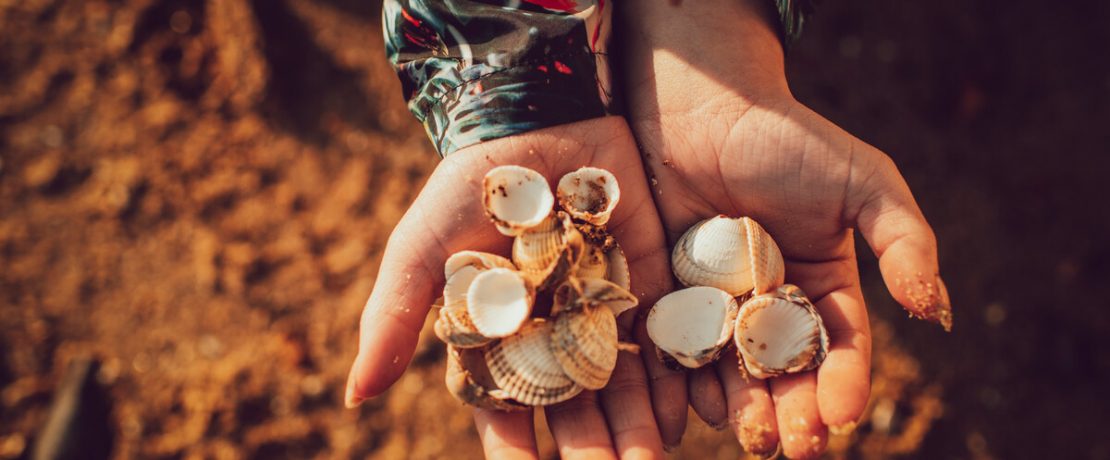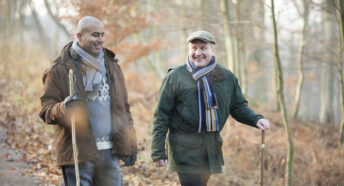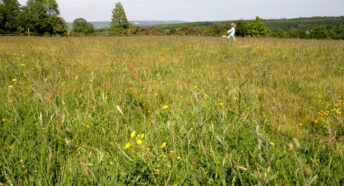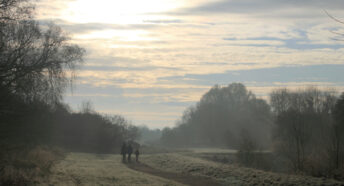Strandline surprises: what to look out for on a winter coastal walk
In the depths of winter with biting winds, rain and sleet, our walks in nature tend to be shorter and brisker – but there’s still plenty to see. If you’re close to the coast, one rewarding way of getting some lockdown exercise while connecting with nature is along the strandline of your nearest beach. Dr Mark Ward provides a guide.
Once the stormy waves have receded, what might look like unappealing piles of rotting seaweed and driftwood can reveal a world of riches. Here are some you might find.
Wracks and kelps
First, seaweed itself is fascinating. You might find many different types of brown, red or green algae. All of them will have originally been attached to rocks, either in between the high and low tide lines or further out to sea, using claw-like ‘holdfasts’. It’s only in rough weather that the seaweeds detach and get washed up on the shore.
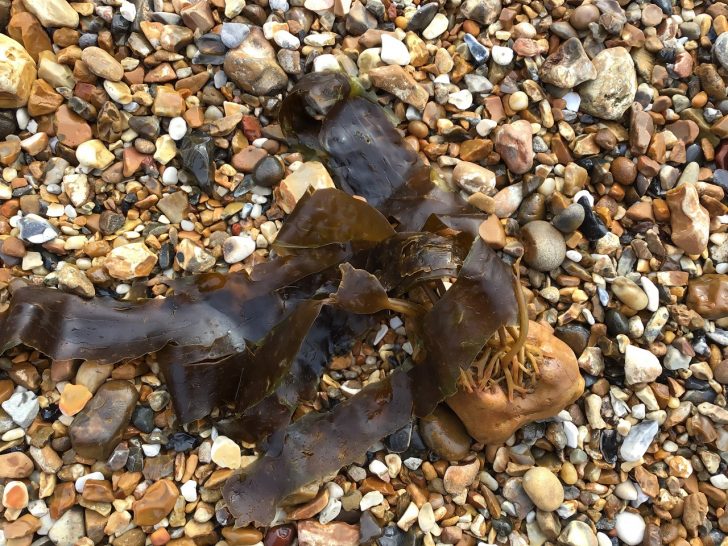
Some seaweeds can survive floating loose, but most, once stranded, will slowly die. The pigments that help them photosynthesise under the water will break down, causing them to change colour from red or brown to faded green or white.
Most strandline seaweeds are brown wracks. These include bladderwrack, with its air-filled bladders that would have helped it float upwards when it was attached to the rocks. Now dead, these bladders can be squeezed until they pop! A very satisfying distraction and why one of their nicknames is ‘popweed’.
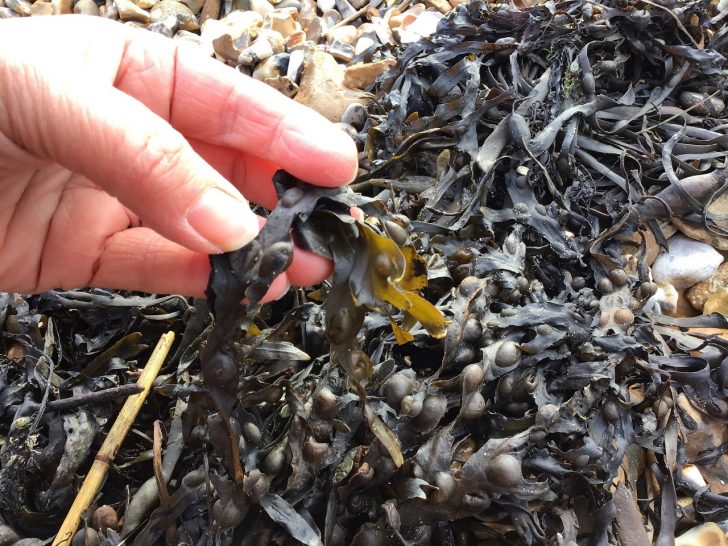
Sometimes there might also be massive belt-like fronds of kelp washed up. Kelp lives in the very lowest part of the shore and just below the low tide mark. The fronds grow from the end of tough stipes (trunks) and are shed in the autumn as part of their seasonal growth cycle, growing new ones in the spring.
All of these decaying piles of seaweed are an excellent food source for all sorts of tiny strandline critters. In the past (and still in some coastal communities) the seaweed would have been collected and spread on nearby fields as a fertiliser.
Sandhoppers, slaters, maggots and flies
If you hold your nose, it’s worth poking around in the piles of seaweed and exposing the damper, smelly layers below. You’ll see lots of creatures scurrying around feasting on the decomposing fronds.
In the summer these will include plenty of insects, such as different species of fly laying eggs in the piles. You’ll often see their larvae, as maggots, wriggling around.
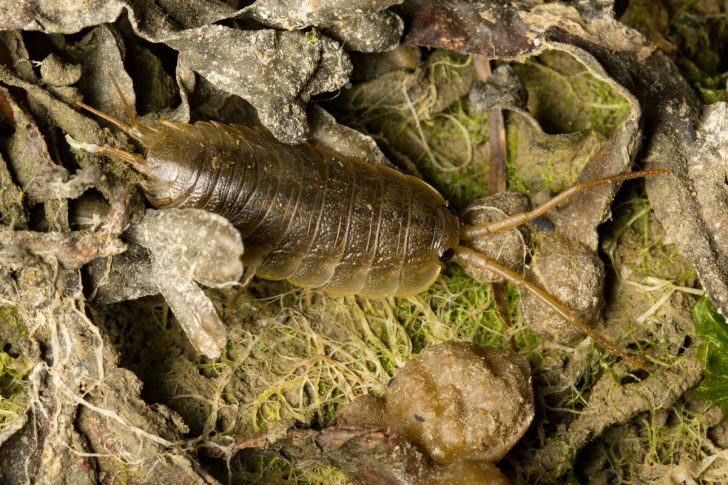
At any time of year, you’ll also see several types of marine crustaceans that have made their home at the top of the shore. These might include a louse called a sea slater, which looks very much like a giant woodlouse, and hundreds of small shrimps with powerful back legs that allow them to jump almost like fleas. Their common name, rather aptly, is sand hoppers.
All these small invertebrates are, in turn, a food source for birds like the small thrush-like rock pipits or waders, like turnstones, who flip the seaweed over to root out their food.
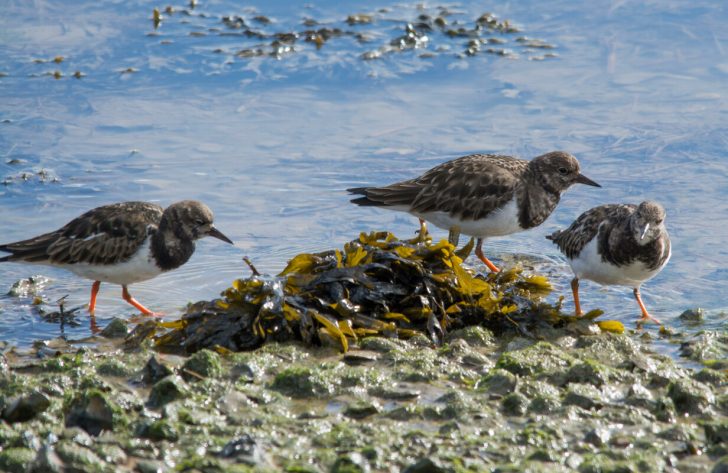
Sea mats and hornwrack
It is also worth examining seaweed for signs of another animal that would have been thriving on them when they were underwater. These are bryozoans, or sea-mats. They look like chalky lace encrusting the fronds, but are actually tiny animals living attached to the seaweed surface in net-like colonies.
If you look closely, you can see the mat is made of hundreds of minute chalky boxes. When still alive, each box would have contained a polyp (a little organism attached to the rock, like in a coral colony – although they’re not related) with feeding tentacles.
Some bryozoans form their own separate branching structures, called horn wrack, which looks similar to a pale creamy seaweed but is brittle to touch. These colonies would have been attached to the seabed below the low tide mark and have also been washed up in storms.
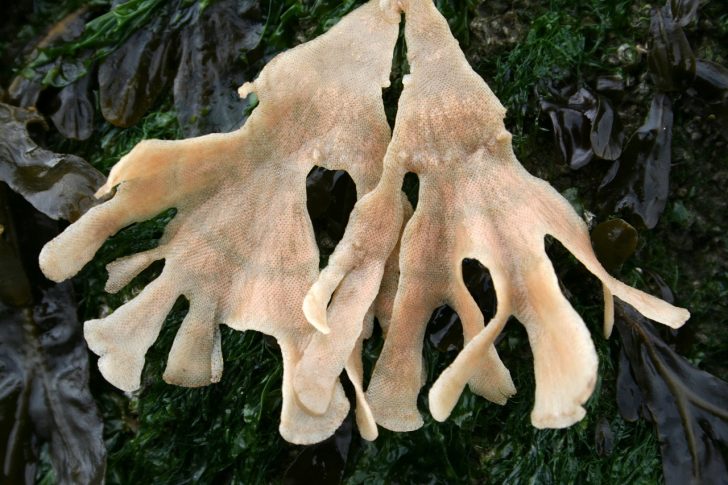
Seashells, cuttlebones and egg cases
Mixed in with the strandline seaweed you’ll also see a whole range of shells of snails such as winkles, topshells and whelks, as well as bivalves like cockles, oysters and mussels. Some may have been washed up from nearby rocky shores and others from further out to sea.
Occasionally egg masses may also get stranded. One of the commonest are the empty egg clusters of the common whelk which look like tatty yellowing bubble wrap.
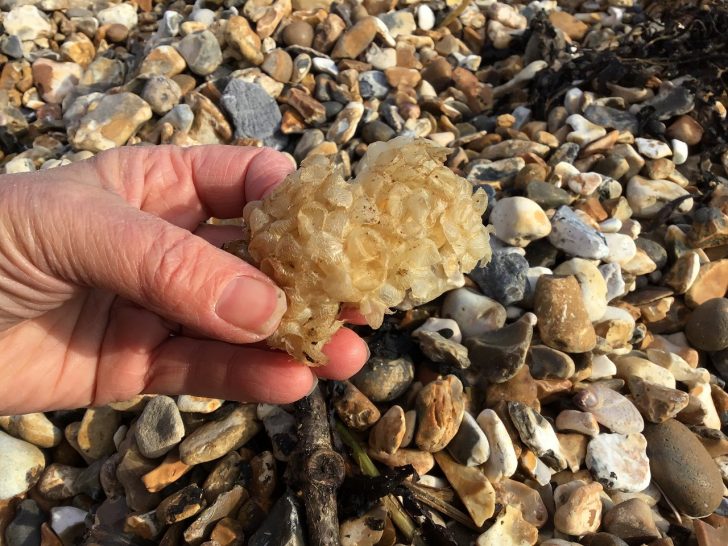
You may also be lucky enough to find mermaid’s purses. These are the egg cases of skates and of sharks such as dogfish that would have been laid amongst seaweeds out at sea and have since hatched and been washed ashore. The Shark Trust is currently running a citizen science project which helps you identify these cases and allows you to report your findings.
Another great find in certain parts of the UK (especially in the south and west) are the internal shells of the cuttlefish. These relatives of octopus and squid tend to die after mass mating events in the spring and all that is left is their cuttlebone.
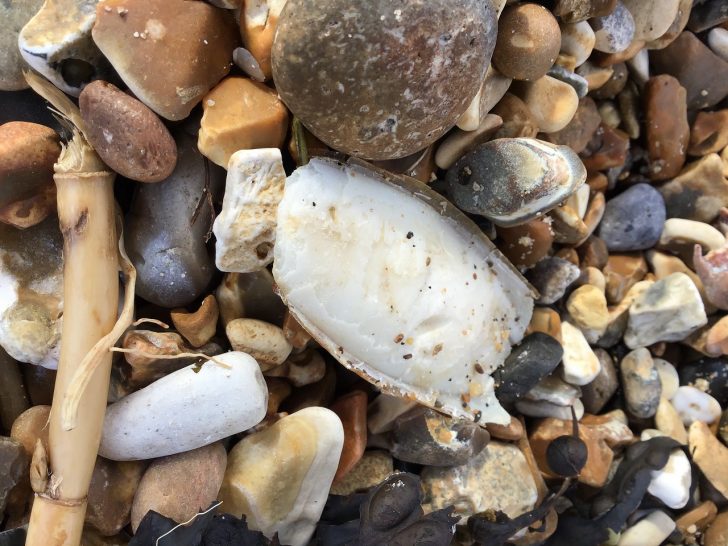
Human debris
Sadly, there is a word of warning for any strandline explorers. Often human litter also gets left by the tide. We all know about the marine plastic problem and in many places volunteers do regular beach cleans to remove the constant stream of plastic waste that gets strewn along our coast.
In times of lockdown though, these can’t be easily organised so why not combine your natural history strandline rummage with a mini-beach clean? Just remember to take a bag and some gloves – tough ones such as gardening gloves are a good protection in case of nasties like needles and shards of glass. And if you find any sealed containers be wary as these may contain toxics.
And if that inspires you to make a new year resolution to litter-pick with a group once lockdown is over, several organisations in the UK, including CPRE, organise beach cleans so do see if there is a local CPRE group or Surfers Against Sewage and the Marine Conservation Society near you.
Dr Mark Ward is Somerset Wildlife Trust’s Brilliant Coast Project Manager. You can learn more about the great stuff being done by the Wildlife Trust and their Brilliant Coast project on their website. We love their work!
